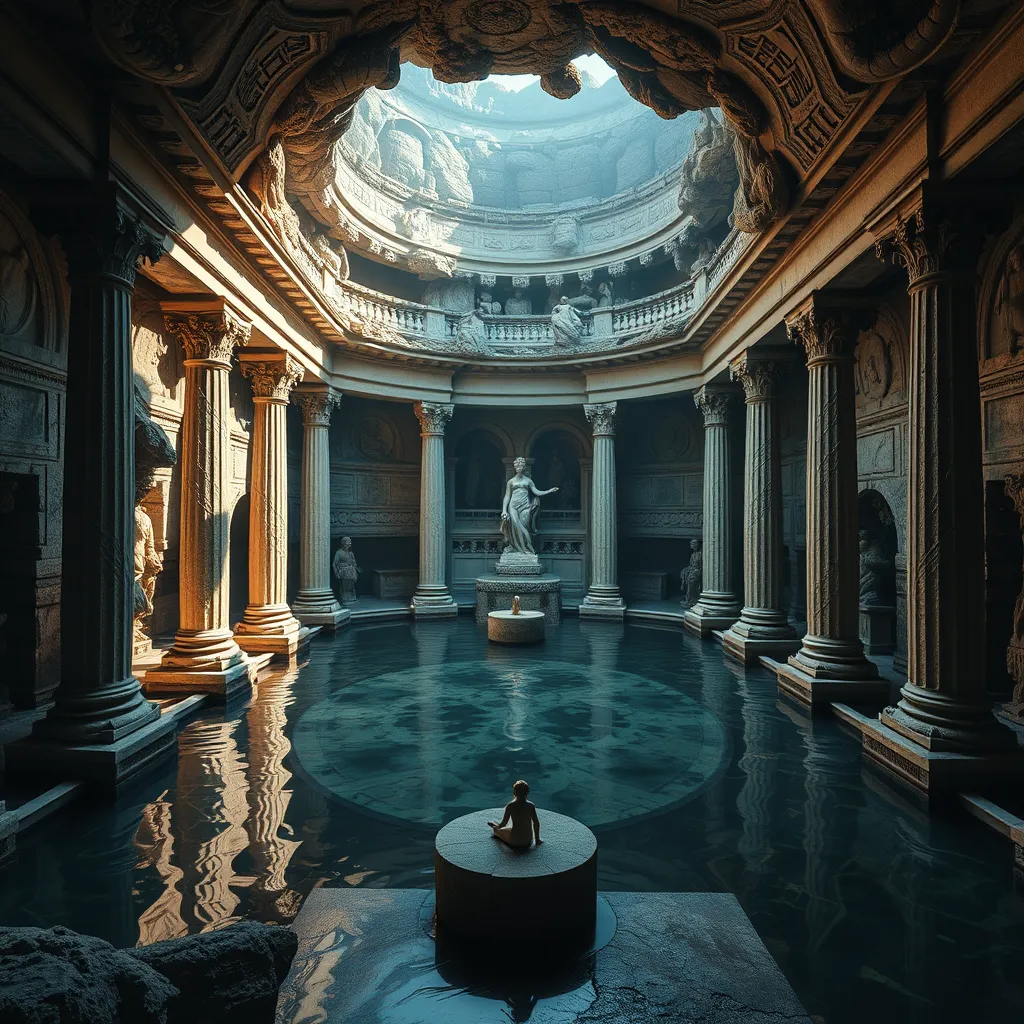Beyond the River Styx: Delving into the Ancient Egyptian Duat
I. Introduction to the Duat
The Duat, often referred to as the Egyptian underworld, holds a profound significance in Ancient Egyptian belief systems. It is not merely a realm of the dead but a complex, layered landscape that embodies the journey of the soul after death. In Egyptian culture, the concept of the afterlife is intricately linked to the cycles of nature and the divine, emphasizing the importance of life after death as a continuation rather than an end.
II. The Structure of the Duat
The Duat is depicted as a vast and intricate realm consisting of various landscapes, each with its unique features and challenges. The structure of the Duat includes:
- Rivers and Lakes: The Duat is often described as having rivers, including the River of Night, which the sun god Ra travels at night.
- Fields of Reeds: A paradise-like area where the souls of the righteous enjoy eternal bliss.
- The Hall of Judgment: A crucial location where the deceased is judged before Osiris.
These realms create a vivid picture of the afterlife, illustrating the Egyptians’ belief in a journey filled with both beauty and peril.
III. Deities of the Duat
Within the Duat, several deities play vital roles in guiding and overseeing the souls of the deceased. Notable among them are:
1. Osiris: The ruler of the underworld
Osiris is the most significant deity associated with the Duat. He is often depicted as a mummified king, symbolizing resurrection and eternal life. As the ruler of the underworld, Osiris oversees the judgment of souls and ensures that the balance of order is maintained.
2. Anubis: The god of mummification and the afterlife
Anubis, depicted as a jackal or a man with a jackal’s head, is the protector of the dead. He presides over the embalming process and guides souls through the Duat, ensuring they reach the Hall of Judgment safely.
The roles of these deities illustrate the Egyptians’ belief in divine guardianship during the perilous journey through the afterlife.
IV. The Journey Through the Duat
The journey through the Duat is a central theme in Egyptian funerary texts. After death, the soul embarks on a perilous journey filled with trials and obstacles. This journey is characterized by:
- Trials: The deceased faces various challenges, including encounters with dangerous creatures.
- Spells and funerary texts: Texts like the Book of the Dead provide spells meant to protect and guide the deceased through the Duat, helping them navigate the challenges they face.
This journey reflects the belief that the afterlife is not merely a destination but a process that requires preparation and knowledge.
V. The Weighing of the Heart
One of the most significant events in the Duat is the Weighing of the Heart ceremony. This judgment process involves several key elements:
- The Judgment Process: The heart of the deceased is weighed against the feather of Ma’at, the goddess of truth and justice.
- Symbolism of the Feather of Ma’at: The feather represents truth and justice, serving as a measure of the deceased’s life and deeds.
- Consequences: If the heart is heavier than the feather, it signifies a life of wrongdoing, leading to the soul being devoured by Ammit, a fearsome creature. Conversely, a lighter heart allows the soul to enter the Fields of Reeds and enjoy eternal life.
This symbolic judgment underscores the moral and ethical dimensions of Ancient Egyptian beliefs, emphasizing accountability in life and the afterlife.
VI. The Role of Funerary Practices
Funerary practices in Ancient Egypt were deeply intertwined with the beliefs surrounding the Duat. Key elements include:
- Burial Customs: Elaborate burial practices were designed to honor the deceased and prepare them for the afterlife.
- Items in Tombs: Tombs were filled with various items, including food, jewelry, and tools, believed necessary for the journey through the Duat.
- Rituals and Prayers: Funerary rituals and prayers were performed to ensure safe passage and to invoke the favor of deities.
Such practices reflect the Egyptians’ deep concern for the afterlife and their desire to provide for the deceased in their journey through the Duat.
VII. The Duat in Art and Literature
The Duat has been a prominent theme in ancient Egyptian art and literature. Its depictions include:
- Art: Tomb paintings often illustrate scenes from the Duat, depicting the journey of the deceased and various deities.
- Texts and Inscriptions: The Book of the Dead and other funerary texts provide rich descriptions of the Duat, detailing the trials and the nature of the afterlife.
- Influence on Later Cultures: The concept of the Duat has influenced various cultural interpretations of the afterlife, echoing in modern spiritual beliefs.
This artistic and literary legacy underscores the importance of the Duat in Ancient Egyptian culture and its lasting impact.
VIII. Conclusion
In summary, the Duat represents a crucial aspect of Ancient Egyptian religion, embodying the beliefs surrounding death, judgment, and the afterlife. Its complex structure, the roles of deities, and the rituals associated with it illustrate a profound understanding of life beyond death. The enduring legacy of the Duat can be seen in modern spirituality and cultural interpretations, highlighting the timeless human quest to understand what lies beyond the mortal realm.
